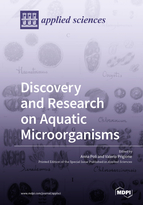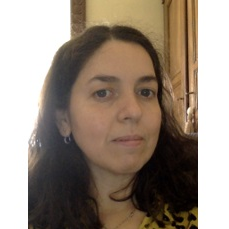Discovery and Research on Aquatic Microorganisms
A special issue of Applied Sciences (ISSN 2076-3417). This special issue belongs to the section "Applied Microbiology".
Deadline for manuscript submissions: closed (20 December 2021) | Viewed by 18416
Special Issue Editors
Interests: marine fungi; systematic; phylogenesis; bioremediation; fungal ecology
Special Issues, Collections and Topics in MDPI journals
Interests: marine fungi; taxonomy; systematic; bioremediation; fungal ecology
Special Issues, Collections and Topics in MDPI journals
Special Issue Information
Dear Colleagues,
Aquatic environments, including freshwater and marine ecosystems, raw and treated sewage, sludge and sediments, are home to a huge variety of microorganisms that mediate the recycling of dissolved organic carbon and recalcitrant substrata into the food webs and the atmosphere. Archaea, Bacteria, Filamentous Fungi and Yeasts play a key role in degradation processes and many of them are used or have the potential to be harnessed in bioremediation. The importance of aquatic microorganisms has to be found in their physiology and behaviour: they can sink or float, some are motile, others adhere to a range of biotic and abiotic substrates (e.g. algae, invertebrates, sediments, driftwood etc.), they can form biofilms on surfaces, remain planktonic or produce a broad diversity of bioactive compounds.
By gathering a collection of papers focused on microorganisms in the over-cited environments, this Special Issue provides an opportunity to improve the current knowledge of aquatic microbial biodiversity.
We welcome manuscripts dealing with any of these topics and with the interactions between microbial communities and other aquatic substrata (e.g. algae, seagrasses, animals etc.)
Dr. Anna Poli
Dr. Valeria Prigione
Guest Editors
Manuscript Submission Information
Manuscripts should be submitted online at www.mdpi.com by registering and logging in to this website. Once you are registered, click here to go to the submission form. Manuscripts can be submitted until the deadline. All submissions that pass pre-check are peer-reviewed. Accepted papers will be published continuously in the journal (as soon as accepted) and will be listed together on the special issue website. Research articles, review articles as well as short communications are invited. For planned papers, a title and short abstract (about 100 words) can be sent to the Editorial Office for announcement on this website.
Submitted manuscripts should not have been published previously, nor be under consideration for publication elsewhere (except conference proceedings papers). All manuscripts are thoroughly refereed through a single-blind peer-review process. A guide for authors and other relevant information for submission of manuscripts is available on the Instructions for Authors page. Applied Sciences is an international peer-reviewed open access semimonthly journal published by MDPI.
Please visit the Instructions for Authors page before submitting a manuscript. The Article Processing Charge (APC) for publication in this open access journal is 2400 CHF (Swiss Francs). Submitted papers should be well formatted and use good English. Authors may use MDPI's English editing service prior to publication or during author revisions.
Keywords
marine and freshwater ecosystems; fungi; archaea; bacteria; microalgae; polyphasic identification; systematics; phylogeny; culturomics; metabarcoding; secondary metabolites; bioactive compounds







